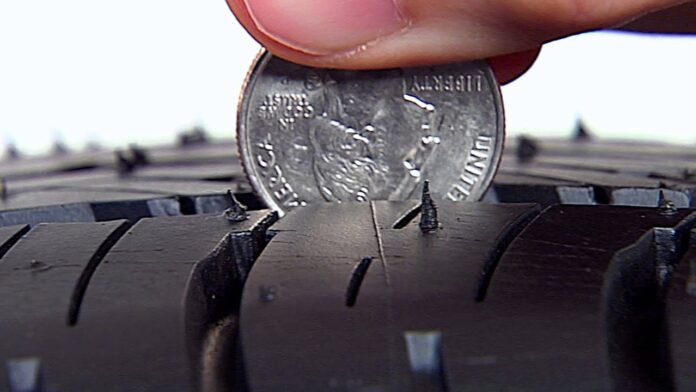As we head into President’s Day weekend, and with spring showers ahead, now is the time to let George Washington check your tires to minimize risk in wet weather.
Previous research from AAA reveals that driving on relatively worn tires at highway speeds in wet conditions can increase average stopping distances by a staggering 43 percent, or an additional 87 feet — more than the length of a semi-trailer truck — when compared to new tires. With nearly 800,000 crashes occurring on wet roads each year and Americans now holding on to their cars longer than ever before, this is cause for concern.
“Tires are what keep a car connected to the road,” says Raymond Elkins, AAA Richmond Club Fleet Operations Manager. “Even the most advanced safety systems rely on a tire’s basic ability to maintain traction to avoid a crash.”
AAA’s research indicated that not only do worn tires increase stopping distance, they also reduce handling ability by about 30%. AAA urges drivers to check tread depth and replace tires proactively.
There’s one test that’s tried and true. Slip an upside-down quarter between your tire grooves and look at Washington’s head – if you can see all of it, it’s time to start shopping for new tires.
“As a reminder, all AAA Car Care Centers across the region have professional technicians who will check your tire with a tread depth gauge, at no cost,” says Morgan Dean with AAA Mid-Atlantic Public and Government Affairs.
While AAA’s research found that tire performance does vary by brand, price is not necessarily an indicator of quality. In fact, worn tire performance deteriorated significantly for all tires tested, including those at a higher price point. AAA advises shoppers to research options carefully before selecting a replacement tire for their vehicle, and never choose one based on price alone.
In wet conditions, all tires can completely lose contact with the road and skid, (known as hydroplaning) but worn tires are far more likely to do so. The depth of a tire’s tread plays a significant role: the lower the tread depth, the more likely a car will hydroplane. AAA recommends the following precautions for drivers navigating rain soaked roads:
-
Avoid the use of cruise control in order to respond quickly if the car loses traction with the road.
-
Reduce speed and avoid hard braking and making sharp turns.
-
Increase following distance to allow for ample space if a sudden stop occurs.
-
If the vehicle begins to hydroplane, gently ease off the accelerator and steer in the direction the vehicle should go until traction is regained. Do not brake forcefully as this can cause the vehicle to skid.
The full report, fact sheet and other information regarding this study can be found on the AAA NewsRoom.

